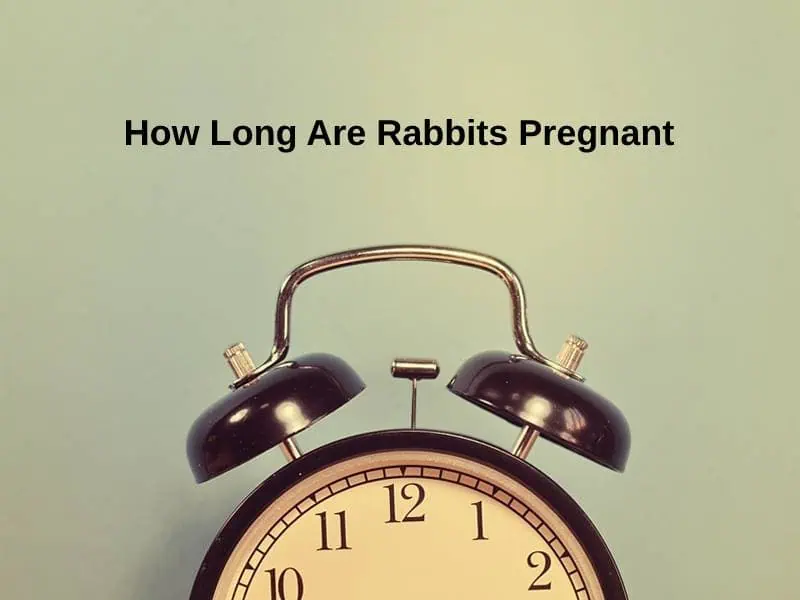Exact Answer: Up to 33 days
The rabbits (female) can start becoming pregnant after they are 12 weeks old. The rabbits can become pregnant till 4 years. The male rabbits are capable of mating till they become 7 years old. There is no specific season or weather for a rabbit to become pregnant. The aggressive behavior of rabbits increases when they are pregnant.
The gestation period of rabbits is 31 to 33 days. The kindling process may take around 15 minutes and take place in the early morning hours.

How Long Are Rabbits Pregnant?
| Gestation Period Of Rabbits | How Long Are Rabbits Pregnant |
| Minimum time period | 31 days |
| Maximum time period | 33 days |
The pregnancy period (gestation period) of rabbits is not beyond 33 days. There are many factors that will affect the length of the gestation period of rabbits.
These are the Size of the rabbit- The size of the rabbits is quite small as compared to other animals. Animals with small sizes will have less gestation period. This is because the rabbits would produce small kits (baby rabbits) and this won’t take much time.
Level of development of kits- The development of baby rabbits plays a vital role in predicting the length of gestation period. If the growth of the baby rabbit would be on time, then the gestation period will not get disturbed. In some cases, the gestation period can increase or decrease by 1 or 2 days due to improper growth of the kits.
The person can know when the female rabbit is pregnant by the symptoms of the rabbits. The symptoms are:
The rabbits would start building nests.
The mother would gather and use their own fur by pulling them out to keep their babies warm.
The female rabbits would develop a defensive attitude and may become aggressive.
Once the rabbits start showing these symptoms, the date of the rabbits’ labor will not be too late. There are some things to be considered for welcoming healthy kits. These are:
Nutrition- Food is vital for normal life and during the phase of pregnancy. The owner should feed dark leafy greens and alfalfa hay to the rabbits. Feeding the rabbits with some rabbit pellets would help in providing the required amount of nutrition.
Water- During the hesitation period, the requirement for clean water for the rabbits is high. Provide the rabbits pure and clear water without any addition of artificial substances (or chemicals).
Why Are Rabbits Pregnant For This Long?
The baby rabbits take around 33 days to be born. After they are born, they need not be disturbed by anyone and should rest in the nest for a few days. If someone tries to disturb the mother and baby rabbits, then it may cause distress to the mother. The mother may stop feeding the kits if disturbed instantly after giving birth.
The number of kits in one litter can affect the gestation time. The maximum number of kits in one litter can be around 14. For example, if the number of kits is 3, then the gestation period would be less. If the number of kits is 14, then the gestation period can be a little late depending on the growth of the baby rabbits.
The baby rabbit would be blind and deaf when born. It takes some time for the growth of rabbits after they are born. The final growth of rabbits to get hair and eyesight begin after 10 days of their birth. The nursing time would be around 5 minutes twice a day, as the mother milk is of high quality.
Keep the female rabbits separated from any male rabbit for a few days (or weeks) after they give birth. As they can become pregnant after giving birth to the kits.
Conclusion
The doe may sometimes experience false pregnancy. Consult the vet after seeing any pregnancy symptoms in the doe for the confirmation of pregnancy. To give birth to the baby rabbits, the mother rabbit needs some privacy. If they are not making their own nest, provide them with a good nest box or any other space for privacy.
Do regular check-ups of the rabbits during the pregnancy phase to avoid any type of health problems. Feed the rabbits everything required for the diet as prescribed by the vet.